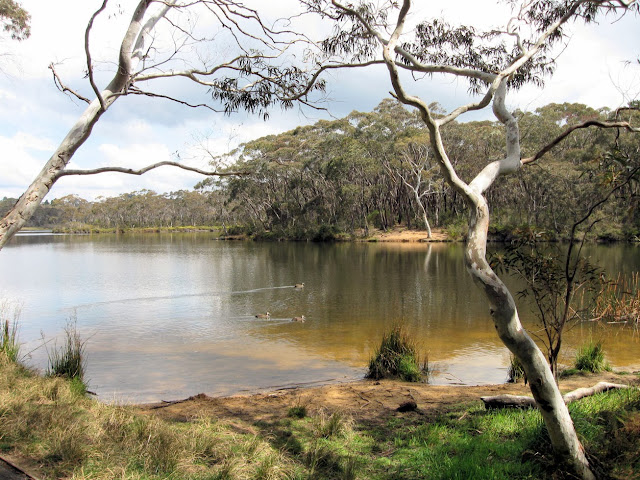Now part of the parklands of Sydney Olympic Park, Newington Armory is a riverside site of undulating hills and woodlands, set aside in the late 1800s for a military magazine. Stone sea walls were constructed along the foreshore of
the Parramatta River fronting the site and the mudflats were filled in
to gain more land for farms, docks and a wharf.

Control transferred to the Royal Australian Navy in 1921, and the RAN Armament Depot expanded up until the 1960s. The depot remained one of
two Navy ammunition storage depots in Sydney until December 1999, with ownership transferring to the State Government's Olympic Coordination
Authority.
 |
| Bld 20 -1897 Powder magazine |
The site is now listed on the state heritage register, due to its significant and rare extensive military and industrial landscape. The earth covering around the magazines, seen in the photos above, acted as a blast shield in the event of an explosion.
Within the grounds are an Artists Studio, a YMCA camping lodge, a theatre that was formerly a naval storehouse, and the
Birds Australia Discovery Centre, which includes an extensive bird book library, education room and
interpretation centre for bird conservation.
The Heritage Railway
This is a 2-foot gauge railway powered by storage battery locomotives, which was used to transport munitions from the wharf to magazines scattered throughout the site. The photo below (bottom left) shows a mock-up of such a train. As you can see it has now been adapted to take tour passengers.



I have wanted to visit Newington Armory since our walking group visited the area on a week day earlier this year. On that occasion we saw the wharf and the gatehouse.
The Armory is only open on the weekends, and the Heritage Railway, which takes you into a restricted section of the reserve, only runs Sundays (10.30am to 1pm when I visited).
If walking or cycling, the Newington Armory can be reached along the River Walk - from the Wilson Park (Silverwater Rd.) end, or from the Sydney Olympic Park Wharf (~2Km) (see 525 & 526 bus routes). The nearby Blaxland Riverside Park is a very popular spot on the weekends, and cars were parked back along Jamieson St. to Holker St. when I visited. Location map


















